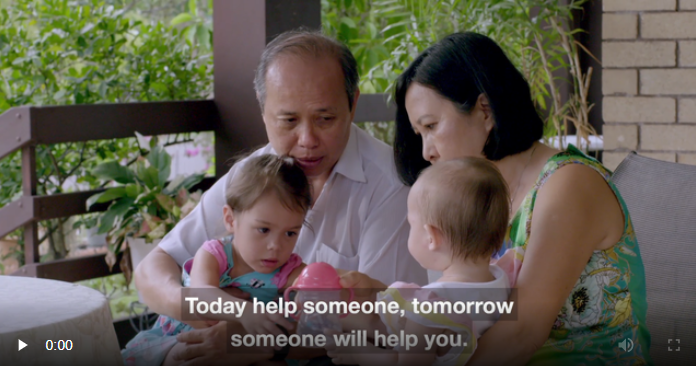Global response

Global Response
The UNHCR and international community work together to create durable solutions to enable refugees and internally displaced persons to live in safety and with dignity. The international community is able to offer some refugees three main options:
REPATRIATION
Most refugees desperately want to go home, and will do so voluntarily as soon as it is safe.
In 2012 approximately 532,000 people from refugee backgrounds were repatriated globally, according to UNHCR country statistics.
“Protection needs do not disappear when people repatriate. On the contrary, they tend to resurface in more complex forms in the country of origin.” Statement by the High Commissioner, UNHCR
The UNHCR and other international agencies take responsibility for assisting refugees with the process of return, and for helping them to rebuild their lives in their homelands. It is important that conditions are safe in the areas that people are returning to. A peace agreement should be in place before any return or repatriation, and armed conflict should have ceased in the areas of return.
Voluntary repatriation is the return of refugees to their home country, of their own free will, once conditions have become safe. Refugees are often asked to return voluntarily when conditions have improved in their country of origin. People must be able to have had a guarantee of protection from their government.
Returning is not an easy process. It takes time for countries to rebuild and repair infrastructure and to restore safe conditions and systems of governance.
Returnees will often require assistance for some time after their arrival. They need assurances of their social, physical and legal protection. Groups that may have been in conflict at the time of displacement also may require assistance with this transition.
Watch and read the story of a family repatriated from Thailand back to their home in Myanmar on the UNHCR News and Stories webpage.
LOCAL INTEGRATION
Many refugees are not able to access refugee camps and/ or live safely in their home country. In this situation people are forced to make a permanent home for themselves in another country where they can find safety, shelter and make a living.
Local integration occurs when refugees seek to attain rights similar to those enjoyed by the citizens of the country in which they have sought refuge. Some but not all are able to gain citizenship.
There are many challenges to local integration for both refugees and receiving communities. At times there can be tensions between refugees and local communities who are often competing for scarce resources, including land and food. However where steps are taken to support both groups, some successful models of integration do exist.
More information
Watch the story of the local integration of refugees from Pakistan, Columbia and Peru in Bolivia
Read more about the estimated 1.1 million refugees who became citizens in their country of asylum at UNHCR » Local integration
Read about the UNHCR’s Local Integration Program in Zambia
Resettlement
Resettlement is the organised movement of refugees from refugee camps, urban areas or other temporary situations to a third country, where they can live permanently. Resettlement in a third country may be the only way to guarantee the protection of a refugee who is at risk of forcible return or who faces other serious problems in the country they have sought asylum.
Many countries assist refugees to make a new home outside of their own country. All countries that have signed and ratified the UN Refugee Convention, including Australia, are obliged to grant the same human rights and assistance to refugees that they grant to their citizens and other legal residents.
Gaining access to offshore resettlement programs in developed countries is extremely difficult or impossible for many refugees.
More information
Read more about the UNHCR: Resettlement programs
Read more about refugee resettlement in Australia » Refugee Council of Australia
Read about Syrian and Iraqi refugees settled in Armidale, NSW
Read the report about refugees settled in Fairfield, NSW in the Sydney Morning Herald
The Syrian Humanitarian Crisis: Australia's response
Syria’s civil war has been ongoing since 2011. The continuing violence has created ‘the biggest humanitarian and refugee crisis of our time’ (Filippo Grandi, UNHCR High Commissioner).
As of April 2020, roughly 5.6 million Syrians have fled their country, according to the UN High Commissioner for Refugees, and more than 6.2 million people are displaced internally.
The UN and many countries have come together to support those fleeing Syria’s war. In September 2015, Australia pledged 12,000 humanitarian visas to Syrian and Iraqi refugees (in addition to the intake of our regular Humanitarian Program). By March 2017, these visas were all granted.
Australia also committed more than $220 million in financial humanitarian assistance to Syria and its neighbours, in response to the Syrian crisis, to be spent between 2017 and 2019.
The NSW State Government allocated $146 million in the 2016-2017 Budget to be spent over four years in assisting Syrian and Iraqi refugees as they resettled in NSW.
More information
Read more about Australia’s response to the Syrian and Iraqi Humanitarian Crisis (Department of Home Affairs)
Read more about refugees settled in NSW (NSW Government)
Read CNN's Syrian Civil War Fast Facts
Visit UNHCR’s Inter-agency Information Sharing Portal: Syrian Regional Refugee Response

